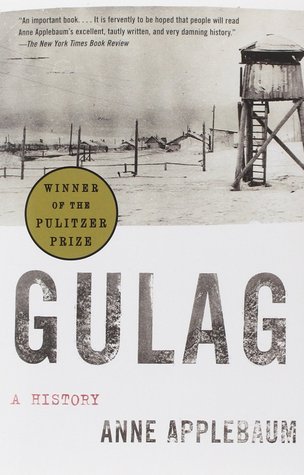More on this book
Community
Kindle Notes & Highlights
Some, like Ivan Chukhin, a former secret policeman and historian of the early camp system, speculate that Stalin promoted the Gulag’s overambitious early construction works in order to build up his own prestige. At this time, he was still just emerging as the leader of the country after a long and bitter power struggle. He may have imagined that new industrial feats, achieved with the help of prison slave labor, would help him secure his power. 34 Stalin may also have been inspired by an older historical precedent. Robert Tucker, among others, has amply demonstrated Stalin’s obsessive interest
...more
In the Russian historical tradition, Peter is remembered as both a great and a cruel leader, and this is not thought to be a contradiction. After all, nobody remembers how many serfs died during the building of St. Petersburg, but everybody admires the city’s beauty. Stalin may well have taken his example to heart.
If, throughout the rest of the country, 1937 was remembered as the year in which the Revolution devoured its children, in the camp system it would be remembered as the year in which the Gulag consumed its founders, beginning at the very top: Genrikh Yagoda, the secret police chief who bore the most responsibility for the expansion of the camp system, was tried and shot in 1938, after pleading for his life in a letter to the Supreme Soviet. “It is hard to die,” wrote the man who had sent so many others to their deaths. “I fall to my knees before the People and the Party, and ask them to pardon
...more
Stalin killed more members of the pre-1933 German Communist Party Politburo than did Hitler: of the sixty-eight German communist leaders who fled to the Soviet Union after the Nazi seizure of power, forty-one died, by execution or in camps. The Polish Communist Party may have been even more thoroughly decimated. According to one estimate, 5,000 Polish communists were executed in the spring and summer of 1937.3
The whole process of the disintegration of personality took place before the eyes of everyone in the cell. A man could not hide himself here for an instant; even his bowels had to be moved on the open toilet, situated right in the room. He who wanted to weep, wept before everyone, and the feeling of shame increased his torment. He who wanted to kill himself—in the night, beneath the blanket, trying to cut the veins in his arm with his teeth—would be quickly discovered by one of the cell’s insomniacs, and prevented from finishing the job.17
The brigadier’s attitude mattered because, for the most part, general work was not intended to be phoney or meaningless. Whereas in German camps, work was often designed, according to one prominent scholar, to be “principally a means of torture and abuse,” Soviet prisoners were meant to be fulfilling some aspect of the camp’s production plan.
One can attempt to come up with explanations for this enormous effort. Perhaps the Cultural-Educational Department functioned, within the Gulag bureaucracy, as the ultimate scapegoat: if the plan was not being fulfilled, it was not poor organization or malnutrition that were to blame, not stupidly cruel work policies or the lack of felt boots—but insufficient propaganda. Perhaps the system’s rigid bureaucracy was at fault: once the center had decreed there must be propaganda, everyone tried to fulfill the order without ever questioning its absurdity. Perhaps the Moscow leadership was so
...more


